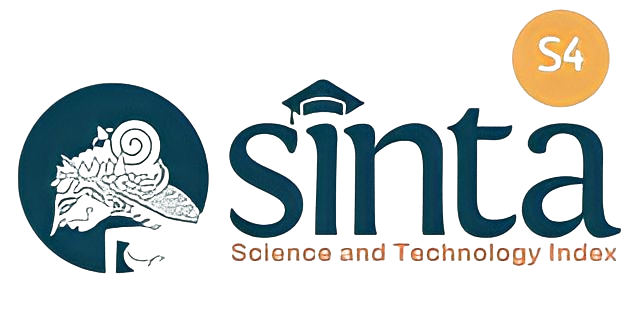Religious in Secularcapes: Adaptasi Identitas Santri dalam Ruang Sekuler di Mato Kopi
Keywords:
Adaptasi Keagamaan, Mato Kopi, Religioscapes, Religious in Secularcapes, SantriAbstract
Penelitian ini membahas adaptasi santri terhadap ruang sekuler melalui studi kasus Mato Kopi, sebuah warung kopi unik di Yogyakarta. Dengan pendekatan etnografi Spradley dan analisis menggunakan konsep Religioscapes Claudia Seise, penelitian ini mengeksplorasi bagaimana santri membawa identitas dan tradisi keagamaan mereka ke dalam ruang netral seperti warung kopi. Fenomena ini terlihat melalui praktik keagamaan, seperti waktu close order saat adzan, simbol-simbol keislaman, dan rutinitas keagamaan mingguan yang diterapkan di Mato Kopi. Hasil penelitian menunjukkan bahwa santri berhasil menciptakan ruang keagamaan baru yang mengintegrasikan nilai spiritual dalam bisnis modern, sekaligus mempertahankan identitas mereka di tengah tantangan ruang sekuler. Analisis Religioscapes menggambarkan bagaimana ruang netral seperti warung kopi dapat menjadi medium yang dinamis untuk memadukan tradisi religius dengan kebutuhan modern. Mato Kopi menjadi contoh nyata dari sinergi antara religiositas dan ekonomi, di mana kehadiran santri tidak hanya memperkuat jaringan sosial mereka tetapi juga menciptakan nilai tambah bagi usaha yang dijalankan. Studi ini memperkaya wacana tentang hubungan antara ruang keagamaan dan ruang sekuler, serta menegaskan potensi religious in secularcapes sebagai bentuk keberlanjutan tradisi keagamaan dalam konteks modern.
[ This study examines the adaptation of santri (Islamic boarding school students) to secular spaces through a case study of Mato Kopi, a unique coffee shop in Yogyakarta. Using the Spradley ethnographic approach and analysis based on Claudia Seise’s Religioscapes concept, the research explores how santri bring their religious identity and traditions into neutral spaces like coffee shops. This phenomenon is reflected in practices such as close order during the call to prayer (adzan), the implementation of Islamic symbols, and weekly religious routines at Mato Kopi. The findings reveal that santri successfully create new religious spaces that integrate spiritual values with modern economic activities. The Religioscapes analysis illustrates the dynamics of santri in harmonizing religious traditions with secular spaces, fostering a synergy between religiosity and business needs. Mato Kopi exemplifies this synergy, where the presence of santri strengthens social networks and adds value to the business. This study expands the discourse on the transformation of secular spaces into religious spaces through the concept of religious in secularcapes and underscores the significance of religious traditions as part of adaptation to modernity.]
Downloads
 Abstract viewed: 238 times
|
Abstract viewed: 238 times
|
 PDF downloaded = 148 times
PDF downloaded = 148 times
References
Abdillah, Irwan. Kontrusksi dan Reproduksi Budaya. Yogyakarta: Pustaka Pelajar, 2006.
Adibah, Inneke Devi, and Sugeng Harianto. “Gaya Hidup Remaja Santri Nongkrong di Kafe.” Paradigma 8, no. 1 (2019).
Alvanico, Dwika. “Gaya Hidup Konsumsi Fashion Santri Bahrul Ulum Tambakberas Jombang.” Paradigma 11, no. 1 (2022): 1–18. https://ejournal.unesa.ac.id/index.php/paradigma/ article/view/49486.
Arifin, Zainal. “Budaya Pesantren Dalam Membangun Karakter Santri.” Al-Qodiri 6 (2014).
Ayumagara, Elda. “Peran Pondok Pesantren Di Era Globalisasi Dalam Pembentukan Akhalkul Karimah Santri.” Laporan Akhir Skripsi. IAIN PONOROGO, 2021.
Bruinessen, Martin van. “Kitab Kuning: Books in Arabics Script Used in The Pesantren Milieu.” Bijdragen Tot de Taal-, LandEn Volkenkunde 146, no. 2/3 (1990): 226–69. https://www. jstor.org/stable/27864122.
Bukhari, Al-. Shohih Al-Bukhari. 10th ed. Bairut: Dar al-Kutub alIlmiyah, 2019.
Burhani, Ahmad Najib. “GEERTZ’S TRICHOTOMY OF ABANGAN, SANTRI, AND PRIYAYI: Controversy and Continuity.” JOURNAL OF INDONESIAN ISLAM 11, no. 2 (December 4, 2017): 329. https://doi.org/10.15642/JIIS.2017.11.2.329-350.
Chairi, Effendi. “Pengembangan Metode Bandongan Dalam Kajian Kitab Kuning Di Pesantren Attarbiyah Guluk-Guluk Dalam Perspektif Muhammad Abid Al-Jabiri.” Nidhomul Haq : Jurnal Manajemen Pendidikan Islam 4, no. 1 (2019): 70–89. https://doi.org/10.31538/ndh.v4i1.233.
Dhofier, Zamakhsyari. “The Pesantren Tradition: A Study of the Role of the Kyai in the Maintenance of the Traditional Ideology of Islam in Java.” The Journal of Asian Studies 59, no. 4 (2000): 1091–92. https://doi.org/10.2307/2659290.
Faiz, Muhammad Muqronul, and Abdulloh Hadziq. “Warung Kopi Dan Santri; Religion in Secularcapes.” Al-Izzah: Jurnal Hasil-Hasil Penelitian, December 29, 2023, 178. https://doi.org/10.31332/ai.v0i0.7120.
Flanagan, Mariah Camille. “The Religioscape Of Museums: Understanding Modern Interactions With Ancient Ritual Spaces.” University of Pittsburgh, 2017.
Hamzah, Hamzah. “Nilai-Nilai Spiritual Entrepreneurship (Kewirausahaan) Dalam Perspektif Ekonomi Islam.” Syar’ie : Jurnal Pemikiran Ekonomi Islam 4, no. 1 (2021): 43–57. https://doi.org/10.51476/syar’ie.v4i1.239.
Hattox, Ralph S. “Coffee and Coffeehouses: The Origins of a Social Beverage in the Medieval Near East.” The American Historical Review 92, no. 4 (1987): 1010. https://doi.org/10.2307/1864072.
Hayden, Robert M., and Timothy D. Walker. “Intersecting Religioscapes: A Comparative Approach to Trajectories of Change, Scale, and Competitive Sharing of Religious Spaces.” Journal of the American Academy of Religion 81, no. 2 (2013): 399–426. https://doi.org/10.1093/jaarel/lft009.
Igboin, Benson Ohihon. “COVID-19, Food and Freedom to Worship: An Analytic Approach to Nigeria’s Religioscape.” In Global Health, Humanity and the COVID-19 Pandemic, 401–25. Cham: Springer International Publishing, 2023. https://doi. org/10.1007/978-3-03117429-2_18.
Jalin EI M., Abdul Jalil. SPIRITUAL ENTERPRENEURSHIP : Transformasi Spiritualitas Kewirausahaan. Lkis Pelangi Aksara, 2013.
Jamaluddin, Muhammad. “METAMORFOSIS PESANTREN DI ERA GLOBALISASI.” Karsa: Journal of Social and Islamic Culture, July 10, 2012, 127–39. https://doi.org/10.19105/ karsa.v20i1.57.
Kanungo, Pralay. Construction and Transformation of a Sacred City: The Religioscape of Varanasi. De Gruyter, 2022. https://doi.org/10.1515/urbrel.11276431.
Khoo, Gaik Cheng. “Kopitiam: Discursive Cosmopolitan Spaces and National Identity in Malaysian Culture and Media.” In Everyday Multiculturalism, edited by Amanda Wise and Selvaraj Velayutham, 87–104. London: Palgrave Macmillan UK, 2009. https://doi.org/10.1057/9780230244474.
Kilde, Jeanne Halgren. “The Impermanence of Religious Space: Three Models for Approaching Change in the American Religioscap.” In The Oxford Handbook of Religious Space, 100–114. Oxford: Oxford University Press, 2022. https://doi.org/10.1093/oxfordhb/9780190874988.013.23.
Kulkarni, Deepali D. “Digital Mūrtis, Virtual Darśan and a Hindu Religioscape.” Nidan: Nidan : International Journal for Indian Studies 3, no. 2 (2018). https://doi.org/https://hdl.handle.net/10520/EJC-1273db35e9.
Misbah, Aflahal. “Kopi, Warung Kopi, Dan Potensi Studi Keislaman.” Al-A’raf : Jurnal Pemikiran Islam Dan Filsafat, 2018. https://doi.org/10.22515/ajpif.v15i2.1384.
———. “POTRET LANSKAP HARMONI DALAM PROSES PROPAGASI SUFISME DI WARUNG KOPI YOGYAKARTA.” Harmoni 17, no. 1 (June 30, 2018): 88– 104. https://doi.org/10.32488/harmoni.v17i1.286.
———. “Sufisme Dan Warung Kopi: Dialog ‘Pengajian Sufi’ Dengan ‘Masyarakat Warung Kopi’ Di Yogyakarta.” Esoterik, 2018. https://doi.org/10.21043/esoterik.v4i2.4050.
Muqoyyidin, Andik Wahyun. “Kitab Kuning Dan Tradisi Riset Pesantren Di Nusantara.” IBDA` : Jurnal Kajian Islam Dan Budaya 12, no. 2 (2014): 119–36. https://doi.org/10.24090/ ibda.v12i2.441.
R. Dhian Damajani, R. “Vernakularisme, Informalitas, Dan Urbanisme: Café Sebagai Ekspresi Gaya Hidup Kontemporer.” ITB Journal of Visual Art and Design 2, no. 2 (2008): 141–58. https://doi.org/10.5614/itbj.vad.2008.2.2.3.
Rohimi. “WARUNG KOPI DAN SIMBOLISASI KEISLAMAN (Studi Kasus Di Kota Yogyakarta).” Mudabbir: Jurnal Manajemen Dakwah 3, no. 1 (2022): 329–43. https://doi. org/10.20414/mudabbir.v3i1.5087.
Rojikhin, Khoirur, and Muhammad Turhan Yani. “Ngaji Warung Kopi Sebagai Upaya Penguatan Pendidikan Karakter Kepedulian Sosial Pemuda Di Kecamatan Kenjeran Kota Surabaya.” Kajian Moral Dan Kewarganegaraan 11, no. 1 (August 11, 2022): 192–105. https://doi.org/10.26740/kmkn. v11n1.p192-105.
Seise, Claudia. “Islamic Authority Figures and Their Religioscapes in Indonesia.” Teosofia: Indonesian Journal of Islamic Mysticism 10, no. 1 (April 26, 2021): 37–58. https://doi.org/10.21580/ tos.v10i1.8441.
———. Religioscapes in Muslim Indonesia: Personalities, Institutions and Practices. Berlin: regiospectra Verlag, 2020.
Sohrabi, Narcisse M, and Narciss M.Sohrabi. “Coffee Shop (Café), Public Sphere for Further Reflections on Social Movements (Case Study: Tehran, Capital of Iran),” September 15, 2015,18. https://www.academia.edu/26722368/Coffee_shop_Café_Public_Sphere_for_Further_Reflections_on_Social_Movements_Case_Study_Tehran_capital_of_Iran.
Soja, Edeward W. “Thirdspace: Toward a New Consciousness of Space and Spatiality.” In Communicating in the Third Space. Routledge, 2008.
Spradley, James P. The Etnographic Interview. Harcourt Brace Jovanovich Collage Publishers, 2007.
Sweetser, Heather Marie, and Joseph Zeidan. “A Chapter in the History of Coffee: A Critical Edition and Translation of Murtada Az-Zabīdī’s Epistle on Coffee.” The Ohio State University, 2012.
Syahputra, Muhammad Candra. “JIHAD SANTRI MILLENNIAL MELAWAN RADIKALISME DI ERA DIGITAL : STUDI GERAKAN ARUS INFORMASI SANTRI NUSANTARA DI MEDIA SOSIAL.” JURNAL ISLAM NUSANTARA 4, no. 1 (October 1, 2020): 69. https://doi.org/10.33852/jurnalin. v4i1.187.
Trantas, Georgios. “Greek-Orthodox Migrant Religioscape Markers, Heterotopias and Entopias.” In Politics, History and International RelationsSchool of Social Sciences and Humanities. Leeds, UK: ConferenceBASR Annual Conference, 2019.
Widayati, Asri, and Suparjan. “Reaktualisasi Perjuangan Nahdlatul Ulama Dalam Mewujudkan Kedaulatan Sumber Daya Agraria (Studi Gerakan Demokrasi Radikal Pada FNKSDA).” BHUMI: Jurnal Agraria Dan Pertanahan 5, no. 1 (2019): 84– 98. https://doi.org/10.31292/jb.v5i1.321.
William, Sister Mary, and Clifford Geertz. “The Religion of Java.” The American Catholic Sociological Review 22, no. 1 (1961): 59. https://doi.org/10.2307/3708141.
Woodward, Mark R. “The ‘Slametan’: Textual Knowledge and Ritual Performance in Central Javanese Islam.” History of Religions 28, no. 1 (1988): 54–89. https://doi.org/10.1086/463136.
Zukin, Sharon. “Urban Lifestyles: Diversity and Standardisation in Spaces of Consumption.” Urban Studies 35, no. 5–6 (1998): 825–39. https://doi.org/10.1080/0042098984574.





